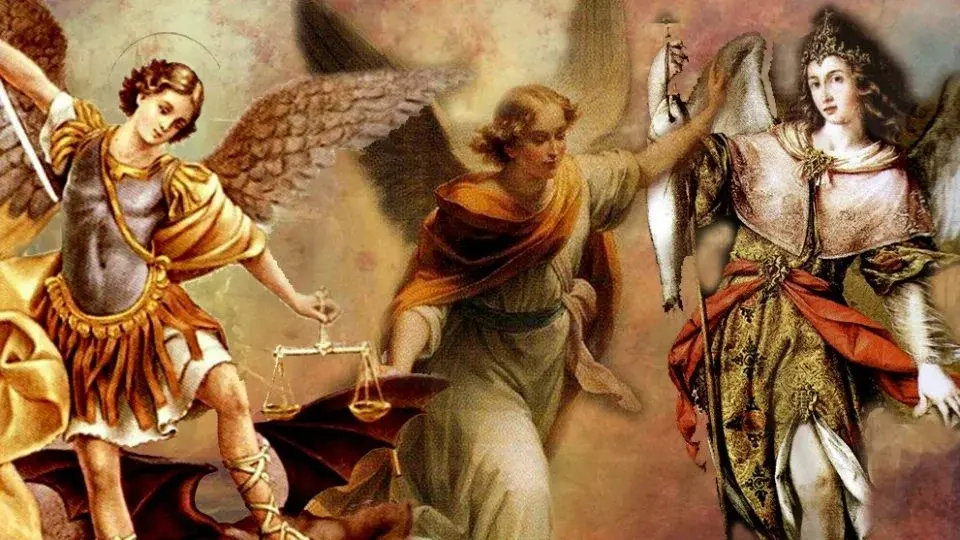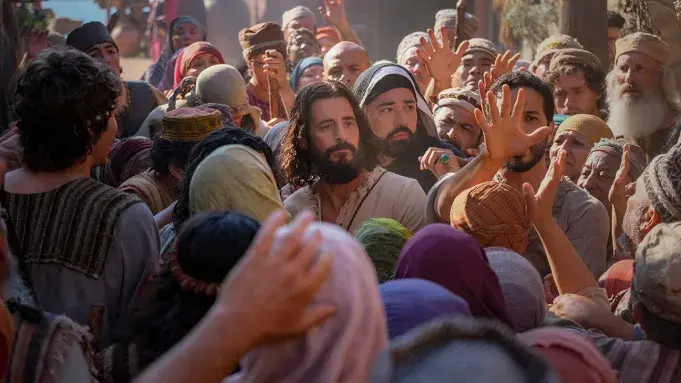The Archangels: Michael, Gabriel and Raphael
- josnardionzon5
- Sep 29, 2023
- 6 min read

Perhaps, the most famous archangel among Filipinos is “San Miguel” as it can gather together the best of friends. “Iba ang may pinagsamahan,” ika nga. The monks and priests, especially the Germans, love “San Miguel”.
𝑩𝒊𝒃𝒍𝒊𝒄𝒂𝒍 𝑨𝒏𝒈𝒆𝒍𝒔 𝒂𝒏𝒅 𝑭𝒊𝒍𝒊𝒑𝒊𝒏𝒐 𝑩𝒆𝒍𝒊𝒆𝒇𝒔
Today’s Gospel reading (John 1:47-52) is often used as “proof” of the existence of angels as Jesus himself said it to Nataniel whom Jesus described as the honest Israelite. In the Bible, Michael is known as the Protector of the People of God; Gabriel is the Messenger of the Annunciation to Mary, and Raphael is the Healer in the Book of Tobit. Then, we have the description of the war in heaven between Michael and his angels and the dragon (interpreted as Satan or the devil) and his angels (Rev. 12:7-9).
For many Filipino Catholics, angels are perceived as mythical creatures from fairy tales, resembling shining humanoids with wings. They are often portrayed as white and good-looking as they are the good ones, while demons are portrayed as black and ugly as they are the bad ones. Similarly, there is a tendency among some people, especially our colonial mentality, to judge individuals based on their appearance.
When encountering white people, such as Americans and Europeans, there might be an assumption that they are good, while dark-skinned individuals like farmers, fishermen, indigenous people, workers, and beggars are sometimes viewed with caution, associating them with negative traits. However, it is essential not to judge people solely by their looks but rather by their actions. In the teachings of Jesus, he condemned priests and religious figures of his time, warning against the hypocrisy of appearing good and holy on the outside while being corrupt and evil in their hearts and deeds. Pope Francis aptly describes priests who have sexually abused children as vicious or ravenous wolves, highlighting that behind their friendly demeanor, impeccable façade, and angelic faces, they hide a dark and dangerous nature, ready to harm innocent souls.
This belief in angels and demons is not difficult for us to understand as we continue our animistic belief of good and bad spirits. The good ones are called anito, diwata and lambana while the bad ones are called aswang, tiyanak and engkanto. We perform rituals, offerings, and prayers to appease or seek the protection of these spirits, ensuring harmony between the natural and supernatural realms.
However, St. Augustine reminds us that we should not think of angels in what they are as divine beings but in what they do: they are fighters, evangelizers, and healers.
𝑻𝒉𝒆 𝑪𝒐𝒔𝒎𝒊𝒄 𝑺𝒕𝒓𝒖𝒈𝒈𝒍𝒆: 𝑨𝒏𝒈𝒆𝒍𝒔 𝒂𝒏𝒅 𝒕𝒉𝒆 𝑩𝒂𝒕𝒕𝒍𝒆 𝑨𝒈𝒂𝒊𝒏𝒔𝒕 𝑬𝒗𝒊𝒍
In the mythical world of Judeo-Christian tradition, a revolution occurred in Heaven. Satan and his minions rebelled against God because, as we are told, Satan wanted to be like God. Who tempted Satan to rebel against God? Who planted the seed of pride and desire for power in his heart? We don’t know, but Michael was not corrupted by pride and power. He led the army of angels to defeat the forces of darkness. This theme is significant in Jewish culture, where a day starts from the night and ends with the day: from darkness, God created light, from chaos to order, from bad to good.
This is what faith is all about: the firm and strong conviction that something good and true can and will happen, that goodness can and will triumph over evil. It is anchored in our Christian hope that God's promises will be fulfilled and that ultimately, good will triumph over evil. This faith provides us with the motivation to live virtuously, love one another, and serve others. It encourages us to persevere in the face of challenges and to trust in God's providence.
𝑭𝒂𝒊𝒕𝒉 𝒂𝒏𝒅 𝒕𝒉𝒆 𝑻𝒓𝒊𝒖𝒎𝒑𝒉 𝒐𝒇 𝑮𝒐𝒐𝒅𝒏𝒆𝒔𝒔
In a world plagued by injustice and violence, especially against the poor, the oppressed, the vulnerable, the marginalized, and those stripped of their dignity, we are called to defend them by exposing and denouncing the evil of injustice and othering. We are called to proclaim, as Jesus did, the good news of the Kingdom of God, where we live in communion with God and in fellowship with one another, in a community where no one is in need or hungry. In this wounded world, we are called to be healers by practicing unlimited forgiveness, even loving our enemies.
Albert Nolan wrote: “To believe in God is to believe that goodness is more powerful than evil and truth is stronger than falsehood. To believe in God is to believe that in the end, goodness and truth will triumph over evil and falsehood, and that God will conquer Satan. Anyone who thinks that evil will have the last word or that good and evil will have a fifty-fifty chance is an atheist. There is a power for good in the world, a power that manifests itself in the deepest drives and forces in people and in nature, a power that, in the last analysis, is irresistible. If Jesus had not believed that, he would have had nothing at all to say.”
𝑨𝒓𝒄𝒉𝒂𝒏𝒈𝒆𝒍𝒔 𝒂𝒏𝒅 𝑴𝒊𝒔𝒔𝒊𝒐𝒏𝒂𝒓𝒚 𝑾𝒐𝒓𝒌: 𝑺𝒕. 𝑨𝒓𝒏𝒐𝒍𝒅 𝑱𝒂𝒏𝒔𝒔𝒆𝒏'𝒔 𝑽𝒊𝒔𝒊𝒐𝒏
For St. Arnold Janssen, the founder of the Society of the Divine Word, the archangels were of great importance: Saint Michael (Who is like God), Saint Gabriel (God is strong), and St. Raphael (God heals). Our first mission houses in Europe were entrusted under the protection of the archangels: St. Michael’s, the motherhouse in Steyl, Netherlands; St. Gabriel’s in Vienna, Austria; and St. Raphael’s, our generalate in Rome. These archangels symbolized attributes crucial to the mission: strength, healing, and divine presence, providing protection for mission houses in Europe.
𝑯𝒐𝒍𝒅𝒊𝒏𝒈 𝒐𝒏𝒕𝒐 𝑯𝒐𝒑𝒆: 𝑳𝒆𝒔𝒔𝒐𝒏𝒔 𝒇𝒓𝒐𝒎 𝑭𝒊𝒄𝒕𝒊𝒐𝒏
Let me conclude this short reflection with the conversation between Frodo and Sam during their perilous journey as they entered the territory of the evil mountain, aiming to destroy the Ring as the only way to defeat Sauron and his minions of evil trolls.
FRODO: I can’t do this, Sam.
SAM: I know. It’s all wrong. By rights we shouldn’t even be here. But we are. It’s like in the great stories, Mr. Frodo. The ones that really mattered. Full of darkness and danger they were. And sometimes you didn’t want to know the end. Because how could the end be happy? How could the world go back to the way it was when so much bad had happened?
But in the end, it’s only a passing thing, this shadow. Even darkness must pass. A new day will come. And when the sun shines it will shine out the clearer. Those were the stories that stayed with you. That meant something. Even if you were too small to understand why. But I think, Mr. Frodo, I do understand. I know now. Folk in those stories had lots of chances of turning back only they didn’t. Because they were holding on to something.
FRODO: What are we holding on to, Sam?
SAM: That there’s some good in this world, Mr. Frodo. And it’s worth fighting for.
A poignant conversation between Frodo and Sam from "The Lord of the Rings" illustrates the enduring human belief in the presence of good amidst darkness. Even in the face of overwhelming evil, the belief in the inherent goodness in the world becomes a powerful motivator, inspiring the fight for a better tomorrow.
Guide Questions for reflection:
Let us be St. Michael, St. Gabriel and St. Raphael. Let us be fighters, evangelizers and healers in this wounded world.
𝑺𝒕. 𝑴𝒊𝒄𝒉𝒂𝒆𝒍: 𝑻𝒉𝒆 𝑭𝒊𝒈𝒉𝒕𝒆𝒓
How can I embody the courage and strength of St. Michael in standing up against injustice and evil in our society today?
In what ways can I defend the vulnerable and protect the dignity of all people, especially those who are marginalized and oppressed?
How can I develop a warrior spirit to fight against the social and moral challenges faced by our community and nation?
𝑺𝒕. 𝑮𝒂𝒃𝒓𝒊𝒆𝒍: 𝑻𝒉𝒆 𝑬𝒗𝒂𝒏𝒈𝒆𝒍𝒊𝒛𝒆𝒓
How am I spreading the message of God's love and salvation, especially in a world filled with distractions and conflicting ideologies?
In what ways can I improve my communication skills to effectively share the Gospel and inspire others to embrace their faith?
Who are the people in my life that need to hear the good news, and how can I approach them with humility and love?
𝑺𝒕. 𝑹𝒂𝒑𝒉𝒂𝒆𝒍: 𝑻𝒉𝒆 𝑯𝒆𝒂𝒍𝒆𝒓
How can I become a source of healing and comfort to those who are suffering, whether it's physical, emotional, or spiritual pain?
What steps can I take to promote physical and mental well-being in my community, especially among those who lack access to healthcare and support services?
How can I cultivate a compassionate heart, following St. Raphael's example, to empathize with the pain of others and offer genuine support?
𝑰𝒏𝒕𝒆𝒈𝒓𝒂𝒕𝒊𝒐𝒏 𝒐𝒇 𝑹𝒐𝒍𝒆𝒔: 𝑩𝒂𝒍𝒂𝒏𝒄𝒊𝒏𝒈 𝑭𝒊𝒈𝒉𝒕𝒊𝒏𝒈, 𝑬𝒗𝒂𝒏𝒈𝒆𝒍𝒊𝒛𝒊𝒏𝒈, 𝒂𝒏𝒅 𝑯𝒆𝒂𝒍𝒊𝒏𝒈
How can I find a balance between being a fighter against injustice, an evangelizer of God's word, and a healer of wounds in my daily life?
Are there specific situations where I find it challenging to embody one of these roles, and how can I overcome these challenges?
How can I encourage others in my community to embrace these roles, creating a collective effort towards positive change and spiritual growth?
𝑪𝒖𝒍𝒕𝒖𝒓𝒂𝒍 𝑹𝒆𝒍𝒆𝒗𝒂𝒏𝒄𝒆: 𝑭𝒊𝒍𝒊𝒑𝒊𝒏𝒐 𝑪𝒐𝒏𝒕𝒆𝒙𝒕
In the context of Filipino culture and traditions, how can I express the qualities of St. Michael, St. Gabriel, and St. Raphael effectively?
Are there specific issues in the Philippines that require the intervention of fighters, evangelizers, or healers, and how can I contribute to addressing these issues?
How can I draw inspiration from Filipino saints and cultural practices to enhance my role as a fighter, evangelizer, and healer in the Filipino Catholic context?
Be well.



Comments